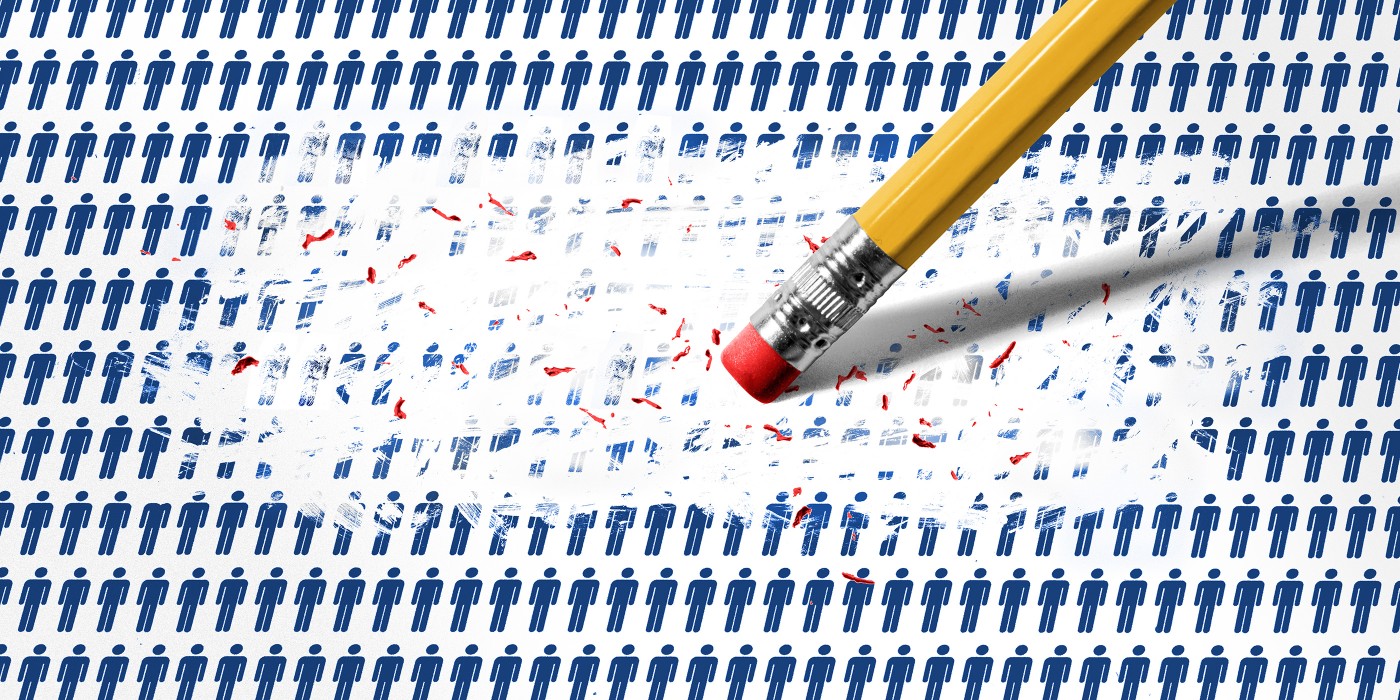Voter purges are an often-flawed process of cleaning up voter rolls by deleting names from registration lists. Done badly, they can prevent eligible people from casting a ballot that counts. This report examines the growing threat, and outlines steps every state can take to protect voters in November and beyond. This builds on the Brennan Center’s 2008 report, Voter Purges.
Introduction
On April 19, 2016, thousands of eligible Brooklyn voters dutifully showed up to cast their ballots in the presidential primary, only to find their names missing from the voter lists. An investigation by the New York state attorney general found that New York City’s Board of Elections had improperly deleted more than 200,000 names from the voter rolls.
In June 2016, the Arkansas secretary of state provided a list to the state’s 75 county clerks suggesting that more than 7,700 names be removed from the rolls because of supposed felony convictions. That roster was highly inaccurate; it included people who had never been convicted of a felony, as well as persons with past convictions whose voting rights had been restored.
And in Virginia in 2013, nearly 39,000 voters were removed from the rolls when the state relied on a faulty database to delete voters who allegedly had moved out of the commonwealth. Error rates in some counties ran as high as 17 percent.
These voters were victims of purges — the sometimes-flawed process by which election officials attempt to remove ineligible names from voter registration lists. When done correctly, purges ensure the voter rolls are accurate and up-to-date. When done incorrectly, purges disenfranchise legitimate voters (often when it is too close to an election to rectify the mistake), causing confusion and delay at the polls.
Ahead of upcoming midterm elections, a new Brennan Center investigation has examined data for more than 6,600 jurisdictions that report purge rates to the Election Assistance Commission and calculated purge rates for 49 states.
We found that between 2014 and 2016, states removed almost 16 million voters from the rolls, and every state in the country can and should do more to protect voters from improper purges.
Almost 4 million more names were purged from the rolls between 2014 and 2016 than between 2006 and 2008. This growth in the number of removed voters represented an increase of 33 percent — far outstripping growth in both total registered voters (18 percent) and total population (6 percent).
Most disturbingly, our research suggests great cause for concern that the Supreme Court’s 2013 decision in Shelby County v. Holder (which ended federal “preclearance,” a Voting Rights Act provision that was enacted to apply extra scrutiny to jurisdictions with a history of racial discrimination) has had a profound and negative impact:
For the two election cycles between 2012 and 2016, jurisdictions no longer subject to federal preclearance had purge rates significantly higher than jurisdictions that did not have it in 2013. The Brennan Center calculates that 2 million fewer voters would have been purged over those four years if jurisdictions previously subject to federal preclearance had purged at the same rate as those jurisdictions not subject to that provision in 2013.
In Texas, for example, one of the states previously subject to federal preclearance, approximately 363,000 more voters were erased from the rolls in the first election cycle after Shelby County than in the comparable midterm election cycle immediately preceding it. And Georgia purged twice as many voters — 1.5 million — between the 2012 and 2016 elections as it did between 2008 and 2012.
Meanwhile, the Justice Department has abdicated its assigned role in preventing overly aggressive purges. In fact, the Justice Department has sent letters to election officials inquiring about their purging practices — a move seen by many as laying the groundwork for claims that some jurisdictions are not sufficiently aggressive in clearing names off the rolls.
This new report follows an extensive analysis of this issue in a 2008 Brennan Center report entitled Voter Purges. In that report, we uncovered evidence that election administrators were purging people based on error-ridden practices, that voters were purged secretly and without notice, and that there were limited protections against purges. In this year’s report, we discovered that little about purge practices has improved and that a number of things have, in fact, gotten worse.
This study also found:
- In the past five years, four states have engaged in illegal purges, and another four states have implemented unlawful purge rules.
Federal standards for purges were set in the 1993 National Voter Registration Act (NVRA). Since 2013, Florida, New York, North Carolina, and Virginia have conducted illegal purges. Moreover, Brennan Center research has uncovered that four states (Alabama, Arizona, Indiana, and Maine) have written policies that by their terms violate the NVRA and provide for illegal purges. Alabama, Indiana, and Maine have policies for using data from a database called the Interstate Voter Registration Crosscheck Program (Crosscheck) to immediately purge voters without providing the notice and waiting period required by federal law (Indiana’s practice has been put on hold by a federal court). Arizona regulations permit Crosscheck purges during the 90 days prior to an election, a period during which federal law prohibits large-scale purges. These eight states are home to more than a quarter of registered voters across the nation.
-
States use inaccurate information.
Although states have improved the way in which they use data to purge the voter rolls in some respects, several jurisdictions rely on faulty data to flag potentially ineligible voters. And some of the new sources of information that have come into widespread use since our 2008 report, such as Crosscheck, are especially problematic. - A new coterie of activist groups is pressing for aggressive purges.
Most purging litigation brought by private litigants before 2008 contended that voter removal efforts were overly aggressive. Today, a different group of plaintiffs is hauling election officials into court, claiming that purging practices in their jurisdictions are not sufficiently zealous.
This report makes the following recommendations:
-
Enforce the NVRA’s protections.
The NVRA, one of the major federal laws governing how states and localities can conduct purges, permits voters and civic groups to sue election officials if they violate the law’s provisions. Monitoring jurisdictions to ensure they are complying with the NVRA — and bringing litigation when necessary — is especially important in an era when election officials are under pressure to mount aggressive purges. -
States should set purging standards that provide even more protections than the NVRA.
The NVRA sets out federal standards for purges and requires that voters removed from the rolls for certain reasons be given notification. But these are minimum guidelines. States can and should do more to protect against disenfranchisement caused by improper purges — for example, providing public and individual notice before purging names from the rolls. -
Pass automatic voter registration.
Automatic voter registration is a popular reform that minimizes registration errors and allows for easy updates, making rolls more accurate and current.





